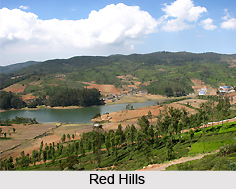 Thiruvottriyur, which is also known as Thiruvotriyur is situated within the city premises of Chennai. Located to the north of Chennai, this city of residential concentration also consists of tourist attraction. It is Thiruvottriyur Beach.
Thiruvottriyur, which is also known as Thiruvotriyur is situated within the city premises of Chennai. Located to the north of Chennai, this city of residential concentration also consists of tourist attraction. It is Thiruvottriyur Beach.
Tiruvottriyur in Chennai is one of the oldest habitations on the Coromandel Coast of the Bay of Bengal. It has a diverse residential population as there is rescent advancement of industrial units, trading activity and nearby fishing hamlets.
Location of Thiruvottiyur
Thiruvottriyur is located very near to Parrys and Chennai Central. Thiruvottriyur is the place with comparatively cheaper residential space and decent amenities, it is fast becoming a sought after residential destination. Thiruvottiyur is located at the latitudinal and longitudinal limits of 13.16 degree North to 80.3 degree East. It is an esplanade located on the shores of Bay of Bengal. The sea encroachment was a major problem for the fishermen before building of Groynes was started in 2004. The groynes, put up over a length of four km, vary in length from 165 to 300 metres each.
Demography of Thiruvottiyur
According to the Population census in the year 2011, the city of Tiruvottiyur had a population of 249,446 with a sex-ratio of 991 females for every 1,000 males, much above the national average of 929. A total of 26,903 were under the age of six, constituting 13,782 males and 13,121 females. The average literacy of Thiruvottiyur was 79.03 percent, compared to the national average of 72.99 percent. The town, Thiruvottiyur had a total of 63862 households. There were a total of 94,000 workers, comprising 451 cultivators, 509 main agricultural labourers, 1,568 in house hold industries, 78,522 other workers, 12,950 marginal workers, 163 marginal cultivators, 136 marginal agricultural labourers, 612 marginal workers in household industries and 12,039 other marginal workers.
 Economy of Thiruvottiyur
Economy of Thiruvottiyur
The economy of Thiruvottiyur is mostly dependent on the urban real estate business and the heavy industrial establishments. Thiruvottiyur is one of the heavily populated locations in Chennai. Thiruvottiyur is supported by numerous small scale industries. The Majority of population in Thiruvottiyur are dependent on these industries for their daily labour. Apart from the secondary industrial sectors, the other primary source of income for the people is local business and fishing industry.
Tourism in Thiruvottiyur
Thiruvottiyur is famous for the pilgrimage tourism site and nature tourism site. Thiruvottiyur consists of Thiruvottiyur beach and a number of ancient temples. Thiruvottiyur is home to the ancient Thyagaraja Temple. There are other tourism sites like the Samadhi of Saint Pattinathar. This temple was visited by many saints and poets like Appar, Sundarar, Gnana Sambandhar, Thyagayyar, Vallalar, Valmiki, Kambar, Adi Shankaracharaya. Kamba Ramayanam was composed here at Tyagaraja Swamy Vadivudaiamman Temple.
Visiting Information
Tiruvottriyur in Chennai is easily accessible by Metropolitan Transport Corporation (MTC) buses from across the city and has a bus terminus. Tiruvottriyur in Chennai is also served by Tiruvottiyur railway station of the Chennai Suburban Railway Network.
Thiruvottiyur MTC Bus Depot was formed in 1975 in Ajax by Metropolitan Transport Corporation (Chennai). There are buses operating from here to all over Chennai and also a few limited services which run to various parts of Tamil Nadu. There is a bus service available to Parrys Corner through different routes. The regular bus services are dominant up-to Poonamallee, Tambaram, Velachery, Thiruvanmiyur, Red Hills, Chennai, Ambathur and CMBT.



















